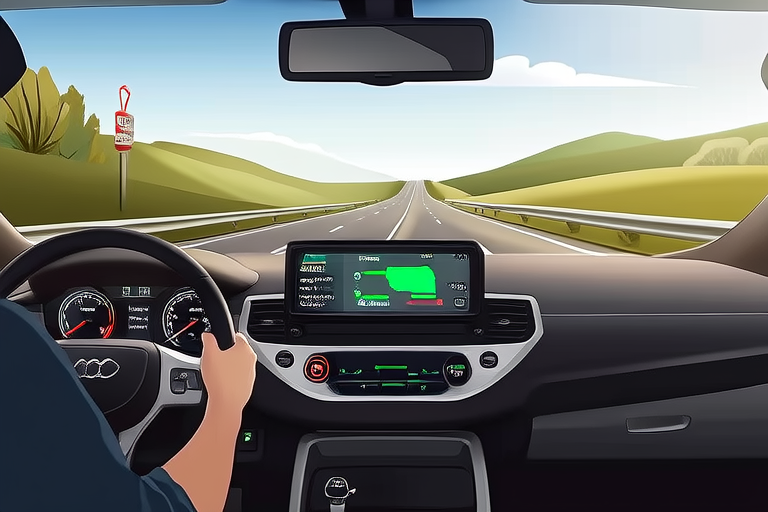Introduction
Fuel efficiency is not just about saving money; it’s also about reducing your environmental footprint and ensuring you can enjoy longer road trips without frequent stops at the gas station. Whether you’re embarking on a weekend getaway or a cross-country adventure, maximizing fuel efficiency can make your journey smoother and more enjoyable. In this article, we’ll explore expert tips that will help you get the most out of every gallon of fuel.
Understanding Your Vehicle’s Efficiency
Before diving into specific driving techniques, it’s important to understand how your vehicle operates and what factors influence its fuel efficiency. Fuel efficiency refers to the distance a vehicle can travel per unit of fuel consumed. Modern vehicles come equipped with technologies like stop-start systems, regenerative braking, and aerodynamic designs that enhance efficiency. However, even with these advancements, how you drive and maintain your vehicle plays a significant role in achieving optimal fuel economy.
Regular Maintenance Checks
One of the simplest ways to improve fuel efficiency is by keeping your vehicle well-maintained. Regularly check your oil levels, tire pressure, and air filters. Clean air filters allow for better airflow, which can improve engine performance and reduce fuel consumption. Properly inflated tires reduce rolling resistance, making your car more efficient. Additionally, ensure that your spark plugs are functioning correctly, as faulty spark plugs can lead to inefficient combustion and increased fuel usage.
Choosing the Right Gear
Driving in the wrong gear can significantly impact fuel efficiency. Manual transmission drivers should aim to shift gears early and smoothly, avoiding high RPMs. Automatic transmissions have their own set of rules—try not to over-rev the engine when accelerating. Many modern cars come with eco modes that optimize gear shifts and throttle response for better fuel economy. Experiment with these settings during your next trip to see if they make a difference.
Driving Techniques for Maximum Efficiency
How you drive has a profound effect on fuel efficiency. By adopting certain driving habits, you can drastically reduce fuel consumption without compromising safety or comfort.
Smooth Acceleration and Deceleration
Aggressive driving, such as rapid acceleration and sudden braking, wastes fuel. Instead, try to accelerate smoothly and anticipate traffic conditions to avoid unnecessary braking. This approach not only saves fuel but also reduces wear and tear on your brakes and tires. If you’re driving in a city with frequent stoplights, consider using cruise control on highways to maintain a steady speed, which can improve fuel efficiency by up to 15%.
Maintaining a Steady Speed
Speed affects fuel efficiency in a non-linear manner. Generally, higher speeds increase drag, which requires more energy to overcome. For most vehicles, the sweet spot for fuel efficiency lies between 50-60 mph (80-97 km/h). While it may be tempting to push the pedal harder to reach your destination faster, maintaining a steady speed within this range can save you a considerable amount of fuel. On long stretches of highway, use cruise control to keep your speed consistent.
Avoiding Idling
Idling burns fuel without moving your vehicle. If you’re stuck in heavy traffic or waiting for someone, turn off the engine instead of letting it idle. Modern engines are designed to start efficiently, so the occasional restart won’t harm them. However, avoid turning the engine off and on frequently, as this can wear out the starter motor.
Practical Tips for Road Trips
Road trips present unique challenges when it comes to fuel efficiency. Here are some practical tips to help you stay on top of your game:
Plan Your Route Carefully
Before setting off, use a reliable GPS app to plan the most efficient route. Some apps offer eco-routing options that prioritize roads with less traffic and fewer hills, both of which contribute to better fuel efficiency. Additionally, avoid congested areas and peak traffic times whenever possible. Not only will this save you time, but it will also reduce fuel consumption due to less stop-and-go driving.
Pack Light
The heavier your vehicle, the more fuel it consumes. Before packing for your trip, consider whether each item is truly necessary. Every extra pound adds up, so try to minimize weight by leaving behind bulky items. If you’re traveling with multiple passengers, encourage them to bring only essentials. A lighter load means better fuel efficiency and potentially faster acceleration.
Use Air Conditioning Wisely
While air conditioning can make your trip more comfortable, it also increases fuel consumption. In cooler weather, open windows to let fresh air in rather than relying on AC. On warmer days, use the AC sparingly, and consider parking in shaded areas or using window shades to keep the interior cool. If you’re driving at highway speeds, closing the windows and using the AC is often more efficient than having the windows down, as wind resistance becomes a bigger factor.
Conclusion
Maximizing fuel efficiency is all about adopting smart driving habits and maintaining your vehicle properly. By understanding the factors that influence fuel economy and implementing the tips outlined in this article, you can enjoy a more cost-effective and environmentally friendly road trip. Remember, small changes in how you drive and maintain your vehicle can add up to significant savings over time. So, before your next adventure, take a moment to review these tips and put them into practice. Happy travels!
